Exploring Strippy Quilts: Research by Helen Barnes
Published: Tuesday, 9th March 2021 11:00 AM
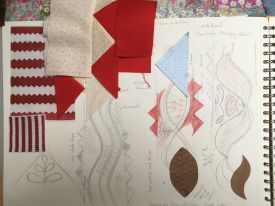
Education is a very important to The Quilters’ Guild and encouraging learning of the traditional crafts of patchwork, quilting and applique is a key part of our mission statement. The Guild has several bursaries available to Guild members which can help further an individual’s knowledge and develop their personal practise. One of those awards is The Amy Emms Bursary. Amy Emms was a North Country quilter and eminent teacher who was influential in passing on design and hand-quilting skills. In 1984, Amy Emms was awarded an M.B.E. for her outstanding contribution to the craft of quilting. In her honour and in recognition of her legendary status within the quilting world, the Guild established the Amy Emms Bursary, providing up to £300 to applicants to further their knowledge of, or skills in, the traditional art of quilting. The Bursary is awarded at the Conference and AGM every two years in even-numbered years. (If you would like to find out more information about this, and other bursaries, visit The Quilters’ Guild Website).
Helen Barnes, a textile artist, teacher and researcher is the current winner of The Quilters’ Guild Amy Emms Bursary. Helen’s concentration on hand-quilted traditional wholecloth pieces inspired and researched from North Country made her the perfect recipient of this award, and she’s been working closely with The Quilters’ Guild Collection as part of her research to find out more about the history, designs and practise of strippy quilts. As part of her work, Helen has been exploring the motifs used on strippy quilts, and carefully studying them before creating her own samples based on the originals she researches. This research also allows for individual artistic interpretation and feeds into Helen’s own artistic practises of creating new, original designs inspired by very traditional roots.
Helen has always been interested in textiles, and remembers being brought up in a home full of crafts. She first became interested in North Country Quilting after studying world textiles as part of her travels. She saw how these textiles were studied and promoted, and felt that she wanted to explore her own heritage in the way she had seen others exploring the traditions of India and Peru.
Her practise includes a lot of hand drawing in her sketchbook, which she prefers to do from examining the actual object, (although recent events have necessitated some work from digital images instead). To her it is more than just seeing a design. When asked why she feels sketching is an important part of her process, she comments “Sketching makes you look more carefully and you get a feel for the flow of the motifs and designs. You see the detail of tiny spirals to fill a gap or two leaves crammed in at the edgeâ€. For Helen it also helps her to connect to the history and maker of the quilt she is studying. “While I sketch I like to visualise the quilter drawing and stitching the designs and wonder what was on her mindâ€.
She also believes that research and practise go hand in hand, with one informing and enlightening the other. Her research into historic examples of strippy quilt designs have enabled her to work out how and in what order they have been drawn out, which she then uses to create her own templates and order of stitching. Such intense study leads to interesting discoveries. She explained that, “for example, if a cable has an odd number of stitched lines you can just draw the outlines, stitch the middle line then go back and fill in the other lines. A cable with an even number of lines is more difficultâ€.
Studying historic pieces has also fostered a great appreciation of those past quiltmakers, who were creating these beautiful quilts without the same resources we have available today. Helen remarks that “Looking at historical strippy quilts shows the creative inventiveness of the ladies who stitched them. I think because they were not made for’ best’ (like the wholecloth quilts) the quilter took more risks and enjoyed putting their own individual personality into it. I have not found a strippy yet without one new linear strip combined with the popular cable, running feather and plaitâ€.
You can see some of Helen’s sketchbook designs, samples and images of the original pieces she researched in the images below. You can also find out more about Helen and her ongoing quilt research on her webage and Instagram page helenbarnestextileartist.
 Sketchbook on Pink and White Strippy Quilt
Sketchbook on Pink and White Strippy Quilt
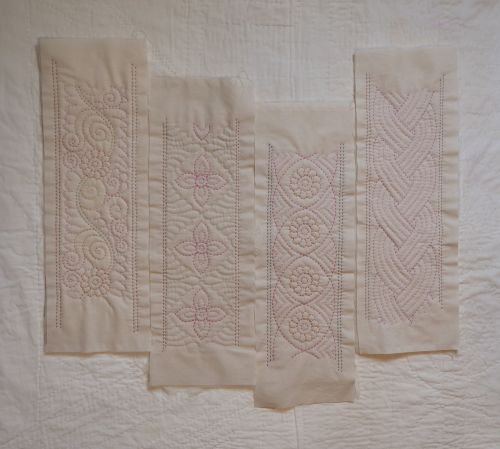 Samples based on Pink and White Strippy Quilt
Samples based on Pink and White Strippy Quilt
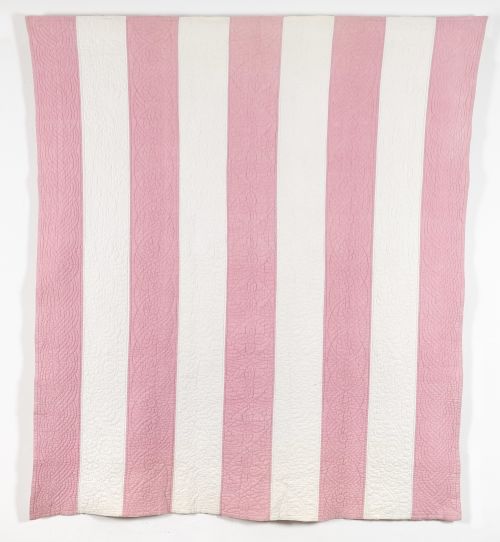 Pink and White Strippy Quilt
Pink and White Strippy Quilt
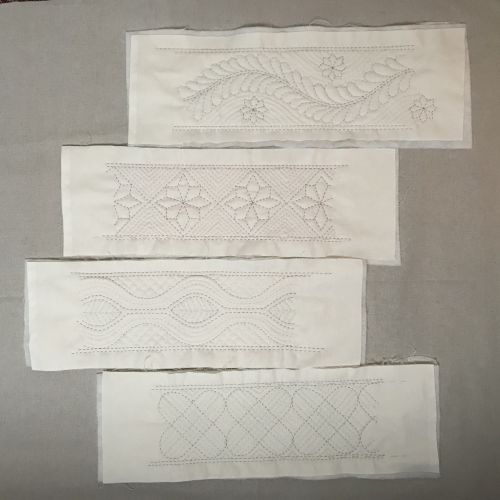 Samples based on Pink and Fawn Strippy Quilt
Samples based on Pink and Fawn Strippy Quilt
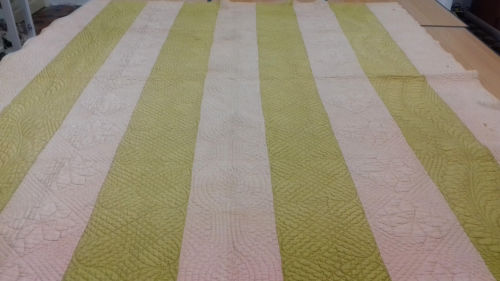 Pink and Fawn Strippy Quilt
Pink and Fawn Strippy Quilt
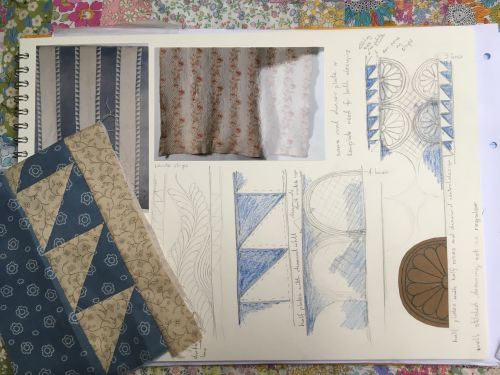 Sketchbook on Blue and White Sawtooth Strippy Quilt
Sketchbook on Blue and White Sawtooth Strippy Quilt
 Blue and White Sawtooth Strippy Quilt
Blue and White Sawtooth Strippy Quilt